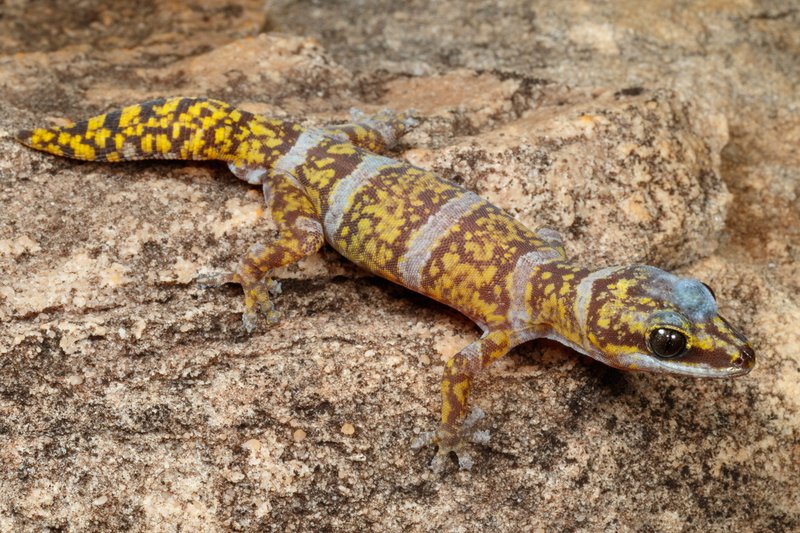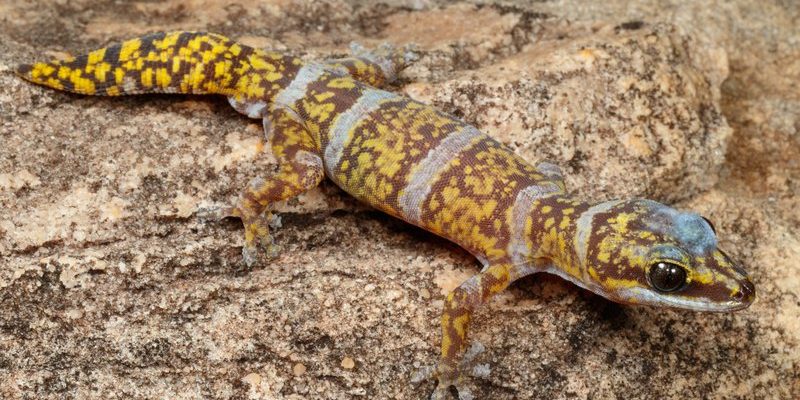
Imagine a small creature that seems to embody the colors of the twilight sky—soft hues of gray and brown, speckled with vibrant spots. That’s the velvet gecko for you! These charming lizards, native to Australia and some nearby islands, are a testament to nature’s creativity. Not only are they stunning to look at, but they also have fascinating habits and adaptations that make them unique in the reptile world.
Often found in rocky outcrops and dry forests, velvet geckos blend seamlessly into their surroundings. They prefer to keep a low profile, using their remarkable camouflage to evade predators. If you were to peer closely into their habitat, you might catch a glimpse of one of these lovely lizards basking in the sun or navigating the crevices of their rocky homes.
Here’s the thing: while they might seem shy at first glance, velvet geckos are full of surprises. From their peculiar social behaviors to their dietary preferences, there’s so much to learn about these fascinating reptiles. So, grab your metaphorical explorer’s hat, and let’s dive deeper into the world of velvet geckos!
Physical Characteristics of Velvet Geckos
Velvet geckos are easily recognizable thanks to their distinctive skin texture and coloration. Their bodies are covered in a velvety, smooth skin that often appears almost iridescent under direct sunlight. This trait not only makes them visually appealing but also serves a practical purpose. The soft texture helps them retain moisture, which is crucial in their often arid environments.
In terms of size, velvet geckos typically grow to about 6 to 10 inches long. While this may not sound like much, it’s important to note that some species can reach up to 12 inches. Their eyes are another striking feature; they are large and round, giving them excellent vision, especially at night when they are most active. You might notice that their eyes have a slight glimmer, a sign that they are well-adapted for their nocturnal lifestyle.
One interesting note about velvet geckos is their color variations. Depending on their specific habitat, these lizards can showcase a range of hues, from sandy beige to deep brown with striking patterns. These differences not only help them camouflage but also serve as a form of communication among the species. Isn’t it fascinating how nature works?
Habitat and Distribution
Velvet geckos are primarily found in Australia, particularly in the eastern regions. Their habitats include dry forests, rocky outcrops, and even urban areas where they can find suitable hiding spots. These lizards are quite adaptable, which is why you might spot them in places ranging from scrubland to suburban gardens.
During the day, velvet geckos often seek refuge in rocky crevices, tree bark, or under leaves. They are excellent climbers, which allows them to navigate their environments with ease. At night, they emerge to hunt, taking advantage of their excellent night vision to navigate and find food.
Understanding their habitat is crucial for appreciating how velvet geckos survive in the wild. They have adapted to thrive in environments where water is scarce, relying on moisture from the insects they eat. This connection to their habitat highlights the intricate balance of ecosystems and the importance of conservation efforts to protect these beautiful creatures.
Diet and Feeding Habits
When it comes to diet, velvet geckos are insectivores. This means they primarily feast on insects, such as crickets, moths, and beetles. Their hunting technique is quite fascinating. Using their keen eyesight and agility, they stalk their prey before making quick, precise strikes to catch them. It’s like watching a tiny predator in action!
In the wild, velvet geckos showcase incredible adaptability in their feeding habits. Depending on availability, they might also consume other small invertebrates. In captivity, you can supplement their diet with mealworms or specially formulated gecko food. A varied diet is essential for their health and well-being.
What’s particularly interesting is how velvet geckos will sometimes exhibit social behaviors during feeding. They may share their hunting grounds with other geckos, coordinating movements and strategies to capture prey more efficiently. This social aspect adds another layer to their already complex lives, showcasing their intelligence and adaptability.
Reproduction and Lifespan
Velvet geckos typically breed during warmer months when food is plentiful. During this time, males will engage in courtship displays to attract females. These displays can include head bobbing, tail waving, and even gentle nudging. Once a female is ready to mate, she will lay clutches of eggs, usually containing two eggs per clutch.
The gestation period for velvet gecko eggs can take several weeks, and once hatched, the young geckos are bright and full of energy. They are independent from birth, ready to hunt and find their own space in the world. It’s a bit like sending a child off to school—exciting and nerve-wracking at the same time!
In terms of lifespan, velvet geckos can live up to 10 years in captivity with proper care. However, in the wild, their lifespan may be shorter due to predators and environmental challenges. Ensuring a safe environment can help them thrive, whether in the wild or as pets.
Conservation Status
As with many wildlife species, conservation is a pressing concern for velvet geckos. While they are not currently endangered, habitat loss due to urbanization and deforestation poses a significant threat. As their natural environments diminish, so does their ability to thrive in the wild.
Efforts are being made to preserve their habitats and educate the public about the importance of these unique reptiles. Participating in local conservation programs and supporting wildlife initiatives can make a real impact. Every small action counts in preserving the delicate balance of our ecosystems, ensuring that future generations can also admire the beauty of velvet geckos.
Also, keeping an eye on local laws regarding wildlife collection is important. In some regions, it’s illegal to capture or keep native reptiles without proper permits. Always check your local regulations and respect wildlife in its natural habitat.
| Characteristic | Description |
| Size | 6 to 12 inches long |
| Habitat | Dry forests, rocky outcrops in Australia |
| Diet | Insectivorous; primarily feeds on crickets and beetles |
| Lifespan | Up to 10 years in captivity |
| Breeding | Seasonal; lays 2 eggs per clutch |
FAQ
What do velvet geckos eat?
Velvet geckos primarily eat insects, including crickets, moths, and beetles. They have excellent hunting skills, using their keen eyesight and agility to catch their food. In captivity, you can provide them with mealworms and specially formulated gecko food to ensure they get the nutrients they need.
How big do velvet geckos get?
Typically, velvet geckos range from 6 to 12 inches long. The exact size can vary based on the specific species and individual factors. Some species may be on the smaller side, while others can grow larger, reaching up to 12 inches.
Are velvet geckos good pets?
Yes, velvet geckos can make great pets for reptile enthusiasts! They are relatively easy to care for and have gentle temperaments. However, it’s important to provide them with a proper habitat, diet, and care routine to ensure they thrive.
Where are velvet geckos found?
These geckos are primarily found in Australia, particularly in dry forest regions and rocky outcrops. They are adaptable creatures and can also be found in urban areas that provide suitable hiding spots for their needs.
How do velvet geckos reproduce?
Velvet geckos breed in warmer months, with males performing courtship displays to attract females. After mating, females lay clutches of two eggs, which hatch after several weeks. The young geckos are independent from birth and ready to fend for themselves.
What is the lifespan of a velvet gecko?
In captivity, velvet geckos can live up to 10 years with proper care. However, their lifespan may be shorter in the wild due to predators and environmental factors. Proper habitat and care can help extend their life.
Are velvet geckos endangered?
Velvet geckos are not currently classified as endangered, but they face threats from habitat loss due to urbanization and deforestation. Conservation efforts are crucial to maintaining their populations and protecting their natural habitats.
What is unique about their skin?
Velvet geckos have a smooth, velvety texture to their skin, which helps them retain moisture in arid environments. This unique characteristic not only makes them visually appealing but is also crucial for their survival in the wild.
Can velvet geckos climb?
Yes! Velvet geckos are excellent climbers, which helps them navigate their rocky habitats and escape from predators. Their strong limbs and sharp claws are specially adapted for climbing, allowing them to scale various surfaces with ease.
Do velvet geckos have social behaviors?
Interestingly, velvet geckos exhibit some social behaviors, especially during feeding. They may share hunting grounds with other geckos and coordinate their movements to catch prey more efficiently. These interactions suggest a level of intelligence and adaptability in their social structures.
How can I contribute to their conservation?
You can contribute to the conservation of velvet geckos by supporting local wildlife initiatives, engaging in habitat preservation efforts, and educating others about the importance of protecting these reptiles. Every small action can make a difference in maintaining the delicate balance of our ecosystems.

